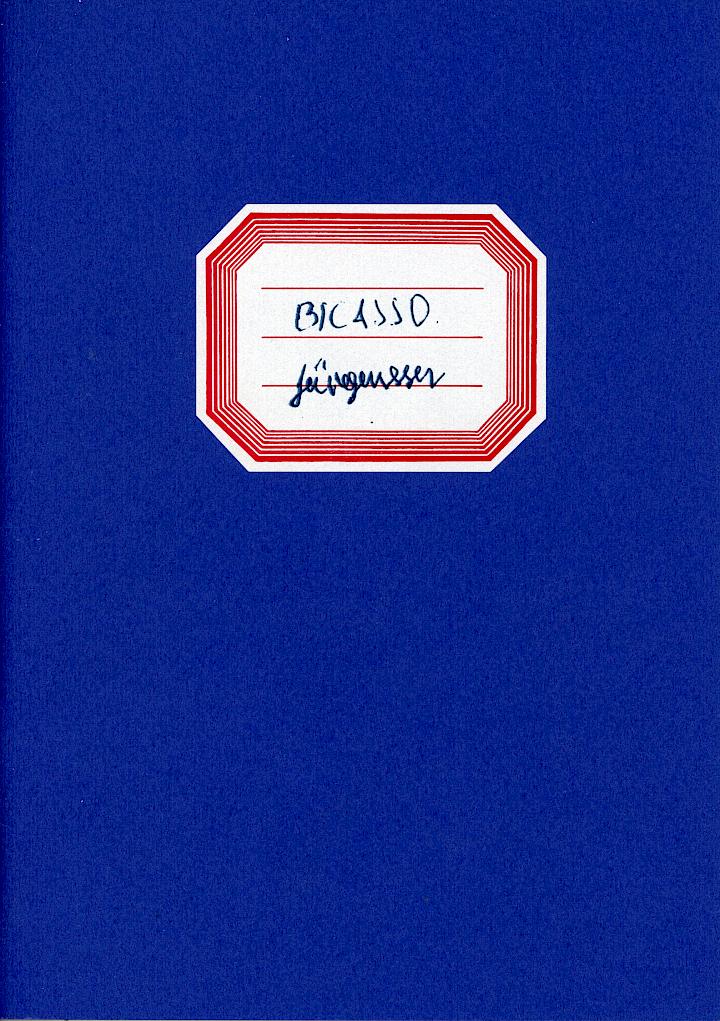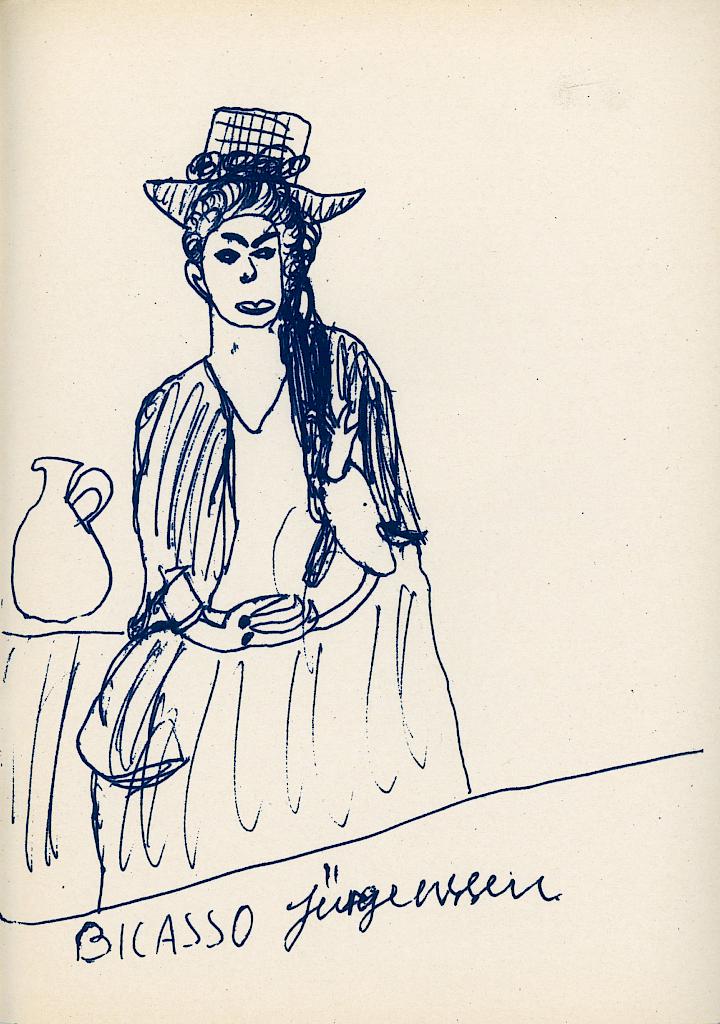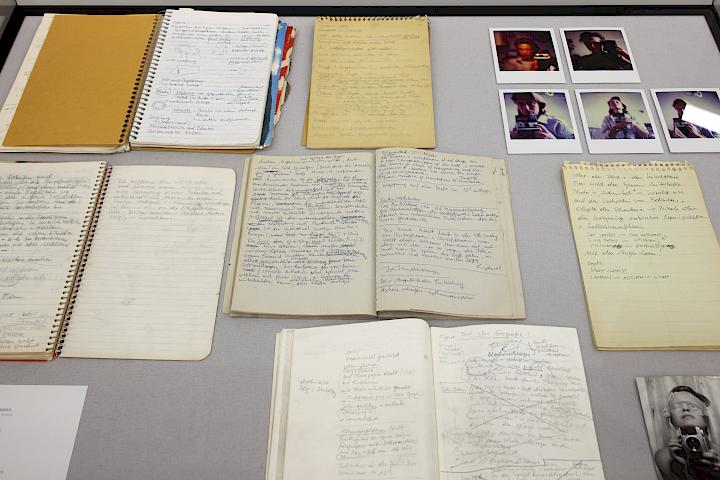The core of her art: Birgit Jürgenssen's Note- and Sketchbooks
The core of her art: Birgit Jürgenssen’s Note- and Sketchbooks.
As a permanent thinker and worker Birgit Jürgenssen (1949 – 2003, Vienna) has acquired an extensive source of ideas revealed in her numerous note- and sketchbooks. Between drawings and writings she developed drafts of thoughts to current works and exhibitions, documented her own elaborated concepts, poems and citations, or frequently noted impulses for her students at the academy. Furthermore, she recorded technical descriptions, work explanations or formulated statements in preparation for catalogue contributions or interviews. As a reader one grasps immediately the impression ”(…) as if the notebook provides the ”inside story“, the ”inside track “ to the soul of the person keeping the notebook, and likewise the inside track as to the genesis of their ideas and achievements. It is like being privy to the secrets of an alchemist`s laboratory, enlivened by their all-too-human foibles and weaknesses.“[1] mehr
Birgit Jürgenssen started drawing her first sketches already during her childhood and even one manuscript of those days was published as a facsimile years later in 1979. The fascinating work of an 8 year old was created – thus of ”BICASSO Jürgenssen“ (1957). The title proves her captivating inventiveness from the very start. By her nickname ”Bi“ she masters the particular symbiosis with Picasso. Page by page the thin exercise book is filled with image citations of the Spanish painter.
More than 80 of these work-, note- and sketchbooks are saved in the Birgit Jürgenssen estate today – an impressive collection of her writings and thoughts. They define Jürgenssen as an incredibly writer, bibliophile thinker and disclose her individual acquisition of knowledge. Looking extensively at her personal archive offers a visualisation of her permanent debate with philosophers and authors. Quotes and poems are marked next to ephemeral notes. Literature was her insatiable passion and indispensable part of Jürgenssen’s art: ”I started very early to spend my time with surrealistic literature and art. My work emerged from an exchange between literature and daily life. It was impossible for me to draw without keeping a piece of literature in mind.“[2]
Concepts can be found consecutively to forthcoming exhibitions or ideas for new artworks. They show Jürgenssen’s approach or rather processes of work and thoughts – the core of her art. For each participation in an exhibition she created something new. It was unimaginable to show one piece of work repeatedly.
Today these personal documentaries are a fascinating source that wonderfully manifests the complexity of her intellectual and artistic interest. One can experience the development of her thoughts, the insight of the genesis and her working rituals. An independent, chaotic and equally poetic process that proofs Jürgenssen’s brilliance and sensibility.
[1] Michael Taussig, Fieldwork Notebooks / Feldforschungsnotizbücher, in: 100 Notes – 100 Thoughts / 100 Notizen – 100 Gedanken, dOCUMENTA 13, p.9
[2] 'Alles fliesst, bedingt und durchdringt einander...' Felicitas Thun-Hohenstein spricht mit Birgit Jügenssen, in: Carola Dertnig, Stefanie Seibold (Hrsg.): let's twist again. Was man nicht denken kann, das soll man tanzen. Performance in Wien von 1960 bis heute (Gumpoldskirchen/Wien: D.E.A., 2006), p. 272-279.


